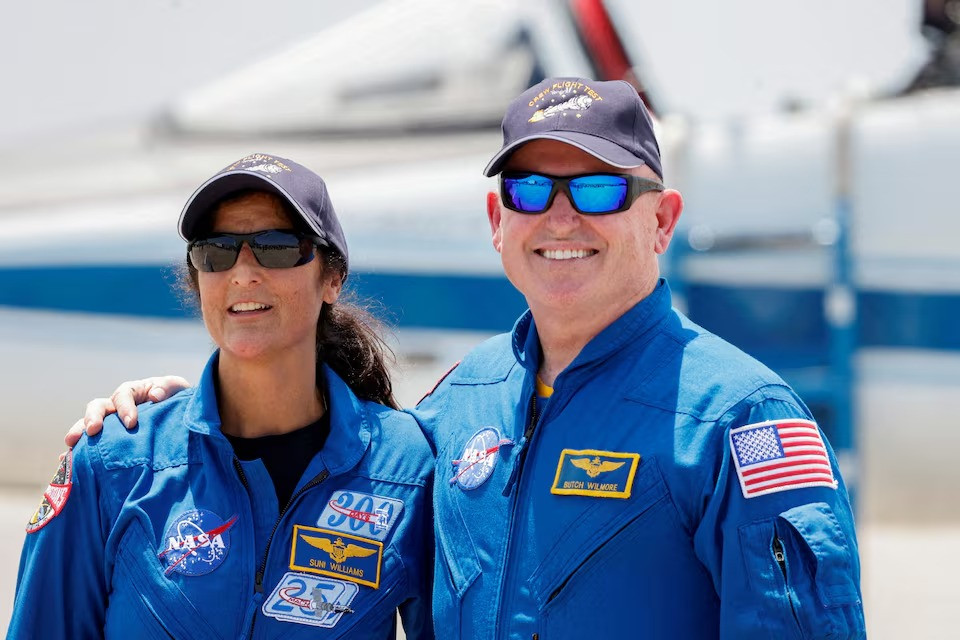
Boeing’s Starliner completes key uncrewed return, facing $1.6b in space struggles
Boeing’s Starliner spacecraft undocked from the International Space Station (ISS) on Friday, completing a crucial test mission without astronauts on board. NASA astronauts Butch Wilmore and Suni Williams, who first flew the Starliner in June, remained on the ISS along with seven others, as the spacecraft autonomously departed at 6:04 p.m. ET (2204 GMT) for a six-hour journey back to Earth. Initially scheduled as an eight-day test, the mission was extended to eight months due to technical problems with Starliner’s propulsion system. While Starliner was stocked with food and supplies, Wilmore and Williams will now return on a SpaceX spacecraft in February 2025, according to NASA's recent update. In preparation for the spacecraft's return, Boeing engineers installed new software to enable Starliner to make the journey back without a crew. This return is considered a crucial test of the spacecraft's manoeuvring systems. Using its thrusters, Starliner is set to gradually lower its orbit before re-entering Earth's atmosphere at around 11:17 p.m. ET (0317 GMT Saturday), with a parachute-assisted landing expected at 12:03 a.m. at White Sands Space Harbor in New Mexico. During its June approach to the ISS, five of Starliner’s 28 manoeuvring thrusters failed, and the propulsion system suffered several helium leaks, which pressurise the thrusters. While Starliner successfully docked on June 6, these issues triggered an investigation lasting several months. Boeing, with assistance from NASA, has since spent $125 million on resolving these problems, bringing the total cost overruns for the Starliner programme to over $1.6 billion since 2016, according to a Reuters analysis of filings. Boeing’s troubles with Starliner have persisted since its failed uncrewed test flight to the ISS in 2019. Although a 2022 re-do mission was largely successful, it also faced some thruster malfunctions. These ongoing challenges raise questions about Boeing's future in space, a field it once dominated before Elon Musk’s SpaceX began offering more affordable satellite and astronaut launches, transforming NASA’s collaboration with private companies. Boeing plans to recover Starliner after its New Mexico landing and continue investigating the thruster failures. However, the spacecraft’s "service module," which houses the faulty thrusters and provides in-space manoeuvrability, is designed to detach before Starliner re-enters the atmosphere. This service module will burn up during re-entry, meaning Boeing will rely on simulated tests to understand what went wrong with the thrusters in space. Starliner, equipped with a heatshield to withstand re-entry, will deploy parachutes to slow its descent. Moments before landing, airbags on the exterior will inflate to cushion the impact when it touches down at White Sands Space Harbor. This landing is expected to be a critical milestone in Boeing’s efforts to address the technical issues that have plagued the Starliner programme.

Boeing’s Starliner spacecraft undocked from the International Space Station (ISS) on Friday, completing a crucial test mission without astronauts on board. NASA astronauts Butch Wilmore and Suni Williams, who first flew the Starliner in June, remained on the ISS along with seven others, as the spacecraft autonomously departed at 6:04 p.m. ET (2204 GMT) for a six-hour journey back to Earth. Initially scheduled as an eight-day test, the mission was extended to eight months due to technical problems with Starliner’s propulsion system. While Starliner was stocked with food and supplies, Wilmore and Williams will now return on a SpaceX spacecraft in February 2025, according to NASA's recent update. In preparation for the spacecraft's return, Boeing engineers installed new software to enable Starliner to make the journey back without a crew. This return is considered a crucial test of the spacecraft's manoeuvring systems. Using its thrusters, Starliner is set to gradually lower its orbit before re-entering Earth's atmosphere at around 11:17 p.m. ET (0317 GMT Saturday), with a parachute-assisted landing expected at 12:03 a.m. at White Sands Space Harbor in New Mexico. During its June approach to the ISS, five of Starliner’s 28 manoeuvring thrusters failed, and the propulsion system suffered several helium leaks, which pressurise the thrusters. While Starliner successfully docked on June 6, these issues triggered an investigation lasting several months. Boeing, with assistance from NASA, has since spent $125 million on resolving these problems, bringing the total cost overruns for the Starliner programme to over $1.6 billion since 2016, according to a Reuters analysis of filings. Boeing’s troubles with Starliner have persisted since its failed uncrewed test flight to the ISS in 2019. Although a 2022 re-do mission was largely successful, it also faced some thruster malfunctions. These ongoing challenges raise questions about Boeing's future in space, a field it once dominated before Elon Musk’s SpaceX began offering more affordable satellite and astronaut launches, transforming NASA’s collaboration with private companies. Boeing plans to recover Starliner after its New Mexico landing and continue investigating the thruster failures. However, the spacecraft’s "service module," which houses the faulty thrusters and provides in-space manoeuvrability, is designed to detach before Starliner re-enters the atmosphere. This service module will burn up during re-entry, meaning Boeing will rely on simulated tests to understand what went wrong with the thrusters in space. Starliner, equipped with a heatshield to withstand re-entry, will deploy parachutes to slow its descent. Moments before landing, airbags on the exterior will inflate to cushion the impact when it touches down at White Sands Space Harbor. This landing is expected to be a critical milestone in Boeing’s efforts to address the technical issues that have plagued the Starliner programme.
